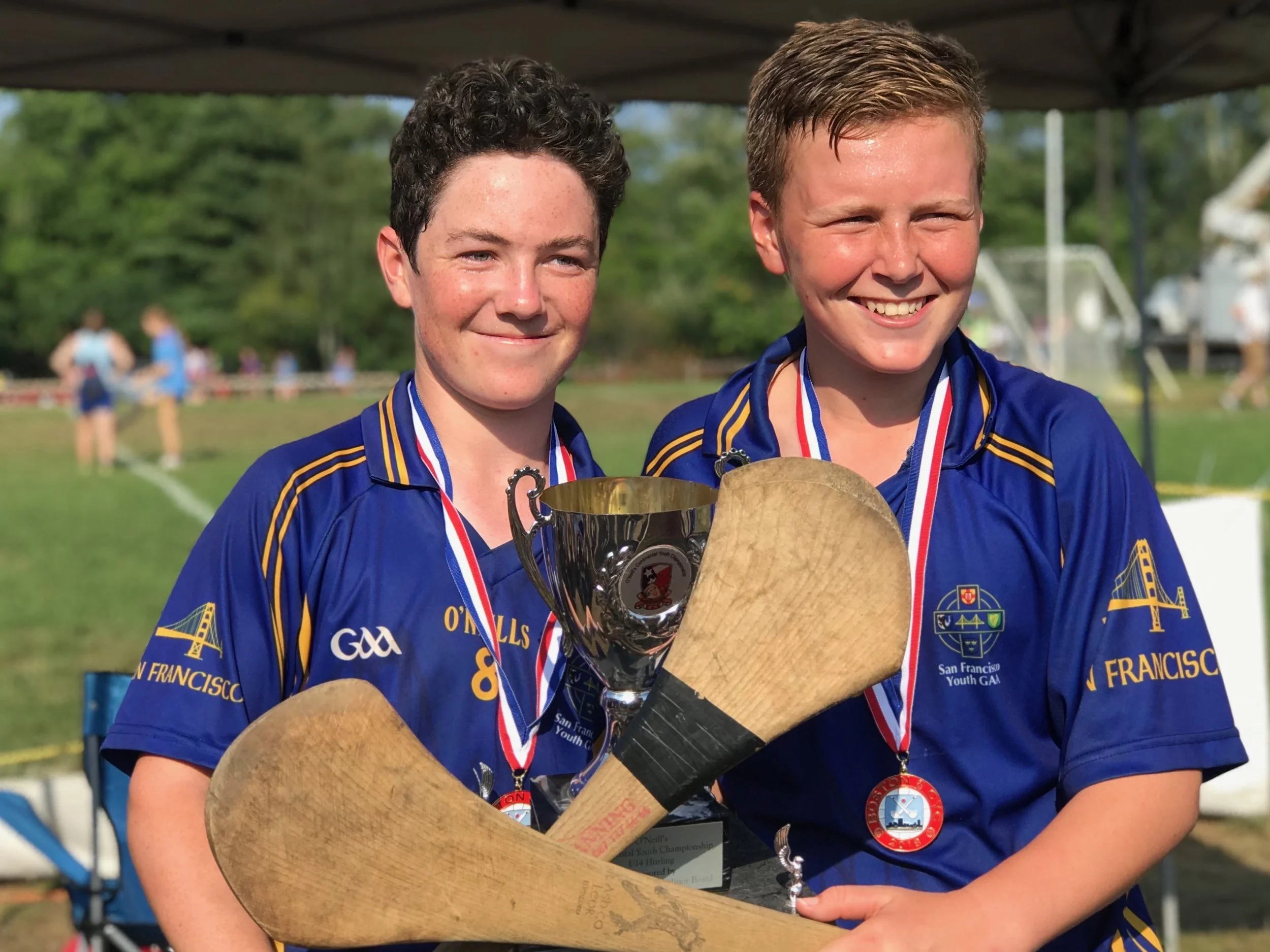
Our vision is that young people of the Bay Area have the opportunity to take part in our games and culture, to grow and develop into leaders, and to be inspired to keep a lifelong engagement with our Association.
Who We Are
In 1994, the Bay Area Irish community founded the San Francisco Youth Gaelic Athletic Association (SFYGAA) to provide a place where young athletes can develop meaningful relationships and engage with the rich culture and heritage of Ireland. SFYGAA offers individuals ages 6 to 18 the opportunity to compete in Gaelic football, hurling, and camogie at both the national and international levels. Throughout the athletic season—which typically runs from March to August—we host weekly practices, fundraising events, and coaching workshops to enable the greater Bay Area community to get involved in any way possible.
Since our founding, we have annually sent teams to the Continental Youth Championships, the premier Gaelic sports youth tournament in North America featuring over 2,500 athletes. Our athletes have found tremendous success on the field; each year, we proudly return home with several championships at the various age groups and with the incredible memories of engaging with other youth teams from across North America.
We also try to send at least one team each year to participate in the Feile, an international tournament in Ireland for 13- and 14-year-old athletes. Our teams gain cultural immersion by touring around the country, participating in home-stays with local families, and attending traditional music and dance sessions. In the Bay Area, our organization has hosted holiday parties, barbecues, summer camps, and various fundraising events to support our youth athletes.
We seek to empower our athletes and build a welcoming community of cultural immersion and mentorship. We also seek to promote healthy and active lifestyles for our youth, creating a culture of both physical and mental well-being.
Our Sports
Gaelic Football
The objective of the sport is to score by kicking or punching the ball into the other team’s goals (3 points) or between two upright posts above the goals and over a crossbar above the net (1 point). Players advance the football, a spherical leather ball, up the field with a combination of carrying, bouncing, kicking, hand-passing, and soloing (dropping the ball and then toe-kicking the ball upward into the hands). In the game, two types of scores are possible: points and goals. A point is awarded for kicking or hand-passing the ball over the crossbar, signalled by the umpire raising a white flag. A goal is awarded for kicking the ball under the crossbar into the net, signalled by the umpire raising a green flag.
Hurling and Camogie
The objective of the game is for players to use a wooden stick called a hurley to hit a small ball called a sliotar between the opponent’s goalposts either over the crossbar for one point, or under the crossbar into a net guarded by a goalkeeper for one goal, which is equivalent to three points. The sliotar can be caught in the hand and carried for not more than four steps, struck in the air, or struck on the ground with the hurley. It can be kicked, or slapped with an open hand (the hand pass) for short-range passing. A player who wants to carry the ball for more than four steps has to bounce or balance the sliotar on the end of the stick, and the ball can only be handled twice while in his possession.







